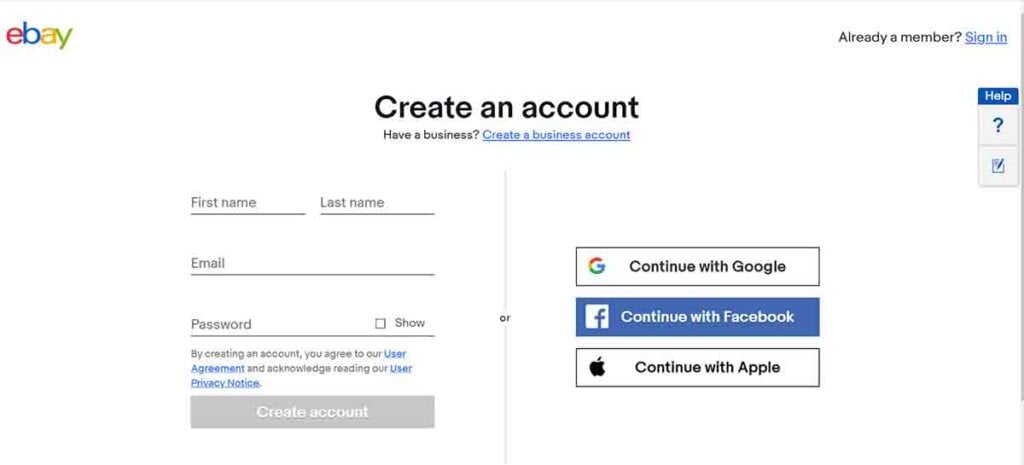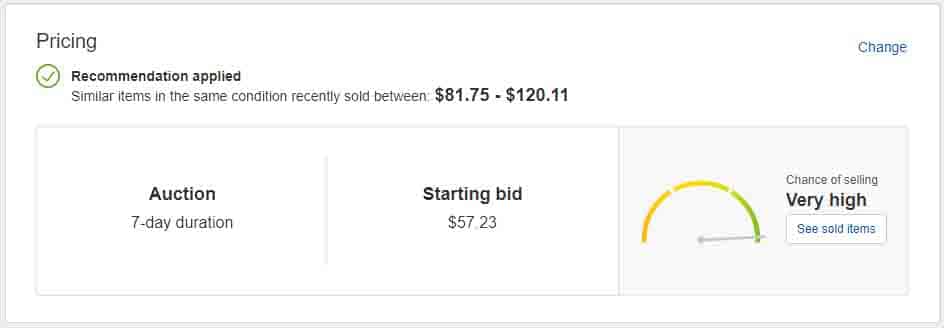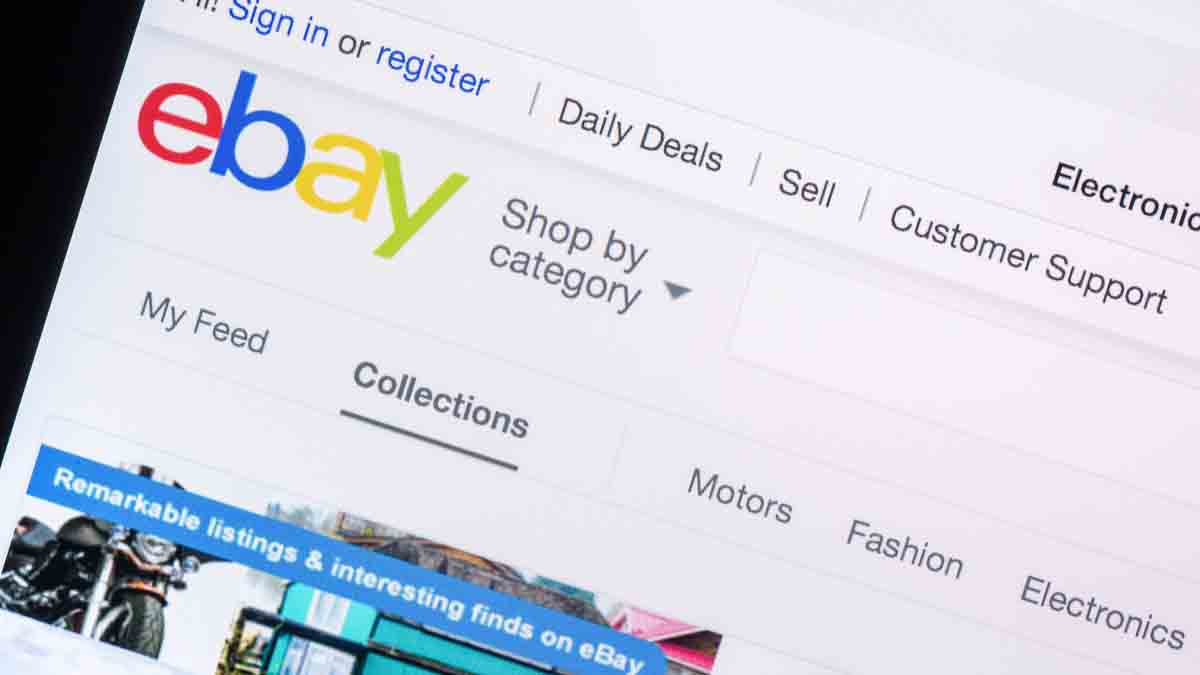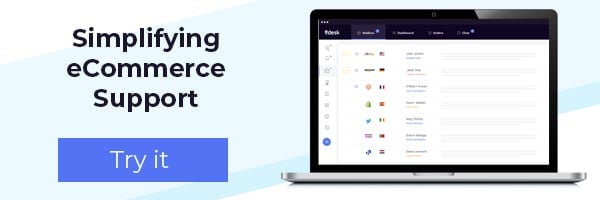Dropshipping on eBay is a popular way to start a business with minimal upfront investment or risk. Unfortunately, the internet is full of over-hyped (less-than-helpful) guides that might make this opportunity seem larger than life.
Is eBay dropshipping actually worth it? And if it is, what steps should you take to be successful? In this guide, we’ll walk you through how you can start dropshipping on eBay in just a few steps.
What is eBay dropshipping?
eBay dropshipping involves selling items on eBay, then working with your supplier to ship them directly to customers. Instead of holding inventory or creating the product, sellers focus on eCommerce marketing, customer service, and finding new products to sell.
To start your own eBay dropshipping business, you’ll need to find products, source them from a supplier and list your items on eBay. Many sellers will use the exact images, product titles, and descriptions provided by their suppliers. When a shopper buys from your eBay listing, the details are passed along to the supplier, who is then responsible for shipping the product to the customer.
Your profit comes from purchasing products at a wholesale price and then reselling them at a higher price.
The rules of eBay dropshipping
Dropshipping on eBay is permitted, providing you follow rules to ensure your store is managed reputably. Here’s how to stay above board:
1. Guarantee delivery within 30 days of the end of the listing
This can be a challenge for sellers because the shipping time isn’t in your control. You need to find an efficient and trust-worth supplier. Make sure you’re constantly monitoring their progress and keep an eye out for delays.
2. Don’t resell products from another retailer or marketplace
You can’t sell an item on eBay, then order the item from Amazon or Walmart and ship directly to your customer. Not only is it confusing for the customer to receive an Amazon package in the mail, but it also means they can’t track shipping.
An important point: you can still use Amazon FBA for eBay fulfillment. The difference is you’ll be using Amazon’s fulfillment services rather than buying the product on their marketplace. Find out more about this method of eBay dropshipping in the article below.
Related article: Using Amazon FBA for eBay Fulfillment
3. Deliver the product as-advertised at the quality customers expect
If your description and the product don’t line up, you can expect negative reviews and returns.
Every negative review you receive will make it harder to rank well in eBay’s search algorithm and you’ll risk losing your eBay stars! If you receive too many complaints, eBay will even shut down your store.
Simply put; don’t try to trick customers into buying your product!
Is eBay dropshipping worth it?
The key to successful dropshipping is a healthy profit margin. In many cases dropshippers will only make a few dollars profit off of each purchase.
Obviously, this depends on the price of the product you’re selling but many dropshipping stores will start off with medium to low ticket items. This is a natural tendency for new sellers who want to minimize risk.
If you’re looking for lots of low ticket sales, eBay can deliver the volume of shoppers you need. In Q2 of 2019, they boasted 182 million users.
Be careful when choosing your eCommerce niche, however. High ticket items can be risky, but cheap products endanger your margins. If you lose your margin entirely, you’re in big trouble!
Related article: Find a Profitable eCommerce Niche: With Examples!
eBay Dropshipping Fees
You have a few different costs to deal with when dropshipping on eBay. eBay’s own fees for using their marketplace as well as your suppliers’ fees. The main eBay dropshipping fees are in the table below:
| Insertion fees | Also called listing fees, you get 50 free per month, and beyond that the fee for listing an item in most categories is just $0.35. |
| Final value fees | Also known as selling fees, these fees are a percentage of an item’s total sales price. For most sellers, it’s just 10% or even lower. |
| Listing upgrades | With optional upgrades like international site visibility, larger photos, and more, you’ve got the power to attract more buyers. |
| Fees in select categories | Fees are different in certain categories, including motor vehicles, real estate, and business and industrial items. |
The two essential fees to consider are the listing fees (the cost to post your item, regardless of whether it sells), and the final value fees (calculated on the item’s final sale price).
You can calculate potential fees for your listings using an eBay fee calculator.
The best items to dropship on eBay
When choosing products for your eBay dropshipping business, it’s important to be strategic. You’ll want to identify items that are in demand, but that aren’t already being sold by a ton of other sellers. Otherwise, it will be hard to compete and that means lowering your prices.
Remember what we said about the dangers of a margins earlier? You’ll want to choose items that you can make a profit from and that you can source easily. The sweet spot is in the $40-$150 range. Any lower and your profit margin shrinks. Higher, and it’s more difficult to convert potential buyers. Remember, more expensive items can also be more expensive to ship, which again cuts into your profit margin.
Finally, consider finding products that can be posted as multiple-item listings. You can make the listing once, tell eBay the size of your inventory and they will keep track for you. This way, you’ll spend less time dealing with posting and listing and have more time to deal with customer service.
Here are some examples of some great items to dropship on eBay:
- Bluetooth Headphones
- Organic Tea
- Vaporizers and E-Cigarettes
- Waterproof Bags
- Resistance Bands
- Baby Carriers
Related article: Product Sourcing 101: The Ultimate Guide
How to start your eBay dropshipping business
You’ve found your winning products and are ready to go. How do you get started?
1. Find a trusted supplier
The supplier you choose can make or break your business. They’re responsible for the storing and shipping of the product, so your reputation is in their hands.
When choosing a dropshipping supplier, consider these key factors:
- What shipping options do they have available? Can they offer expedited shipping?
- How long does it take orders to ship? Does the supplier have a history of satisfied customers?
- How do they conduct quality control? Do they have good customer reviews?
- Can you use their marketing material (photos, specs, and descriptions) in your eBay listings?
A word of warning here: this is a critically important stage to get right. Make sure you find a supplier you can trust. eBay Dropshipping is a great business model when you get it right, but there is potential to be scammed if you partner with a dodgy supplier!
2. Sample your goods
Reputation is everything when selling on eBay.
Sellers often make the mistake of assuming a supplier’s goods are exactly as advertised and start to sell immediately. But if you take orders for products you haven’t seen, and your customers receive something different to your promotional materials, you’re setting yourself up for bad reviews.
Nothing kills an eBay dropshipping business faster than receiving customer complaints early on, so always keep those buyers happy. Request a sample order from your supplier first to make sure that you’re happy with the quality of your future products.
3. Set up your eBay seller account
If you aren’t already selling on eBay, you’ll need your own seller account. Make sure to choose a professional username to build your brand with. To open an eBay account, you only need an email address. To open a business account, you’ll need a business name, type, and address.

4. Choose your payment provider
Secondly, you’ll need to connect a payment provider. Most first-time eBay dropshipping sellers will use PayPal, because it’s free and simple to get started with. Another option is Stripe. Stripe tends to be favored by larger businesses as it offers more potential for customization.
5. Create your product listings
Your product listings have the biggest impact on your conversion rate. By creating professional product descriptions with high-quality images, you can convince shoppers that your product is the best option for them. Product listings that are well written are more likely to rank higher on eBay’s search engine and be returned as a Best Match.
Related article: 14 Essential Hacks to Increase eBay Sales
When shoppers are comparing your product to your competitors, they have a list of questions they are asking themselves:
- Is this the exact item I’m looking for?
- Does this item have the specific feature(s) I’m interested in?
- How quickly will my item arrive?
- Am I dealing with a trustworthy seller?
If you can answer all of these questions with your product description, you’ll be far more likely to win the customer’s business.
6. Set your pricing effectively
One of the most interesting features of eBay is its unique pricing structure. You can choose to allow customers to bid on items, set a specific starting bid, or offer Buy it Now pricing. By pricing your items on eBay effectively, you can maximize your profits and sell more items.
The best way to ensure that you make a profit is to set a starting bid that ensures you’ll cover any fixed costs (such as product cost, shipping, and eBay’s listing fees). From there, you can set Buy it Now prices that meet your profit goals.
eBay also offers pricing recommendations based on other similar items which can help give you a good starting point. Make sure you similar items as an additional reference point, however. eBay will naturally want you to sell at the lowest price possible.

If you’re a multichannel seller, you need to be very careful that your eBay prices don’t dip below those on Amazon. If this happens, Amazon is likely to suspend your listings.
For Amazon sellers thinking of expanding onto eBay, try using repricer.com. Its multichannel pricing feature will replicate your Amazon prices to eBay so you’re selling at a consistent price on both marketplaces.
Related article: How to Master Multichannel Pricing on eBay and Amazon
7. Manage and maintain your brand
Once you’ve set up your product listings on eBay, your priority is to build a strong, positive relationship with your customers. You can do this by quickly dealing with any questions or issues they might have.
eBay’s own customer service portal isn’t really designed for professional online sellers, so has limited functionality. For example, incoming messages from the same person are not consolidated into a thread – this can get very messy, very fast!
Using an eCommerce helpdesk is essential for sellers who take customer service seriously. eDesk integrates with every major online marketplace, including eBay, along with inventory management software and social channels. With every piece of information you need on a single screen, you’ll find customer service quick and easy to manage.
When responding to customer inquiries, remember to keep the following tips in mind:
- Respond quickly: customers don’t want to wait for answers. eDesk users are able to take advantage of A.I. powered one-click responses to solve queries in the blink of an eye!
- Be polite and friendly: the tone of your email can turn around an angry customer. Use your customer service skills to create a positive outcome!
- Resolve the issue: use order details and tracking information to find the best solution to the customer’s questions. With eDesk, these are displayed with your communication and message history. This means you won’t have to go far to solve an issue.
8. Ask for feedback!
Once orders start rolling in, don’t forget to ask for feedback from happy customers. Remember, positive reviews help your listings’ visibility and this increases your eBay sales.
Feedback by eDesk helps increase your seller rating by sending smart, selective feedback requests that improve your brand reputation and grow your business. You can tailor your strategy to target orders by SKU, product type, on-time delivery, destination and more.
Related article: The Best eBay Software for Online Sellers
Final words
There is a lot of hype surrounding eBay dropshipping, but if you put the effort in, it can be a highly profitable business model. There are many factors at play, but sales volume is the key to profit and great service is the key to sales.
As with anything on eBay, sellers are responsible for both the item and their buyer’s satisfaction. If there’s a problem, it’s up to you to resolve it, not the supplier. That’s why it’s important to work with a reliable sourcing company to avoid any issues in the first place.
Keep your finger on the pulse at all times, respond to customers quickly and you’ll be well on your way to running a successful eBay dropshipping business.




